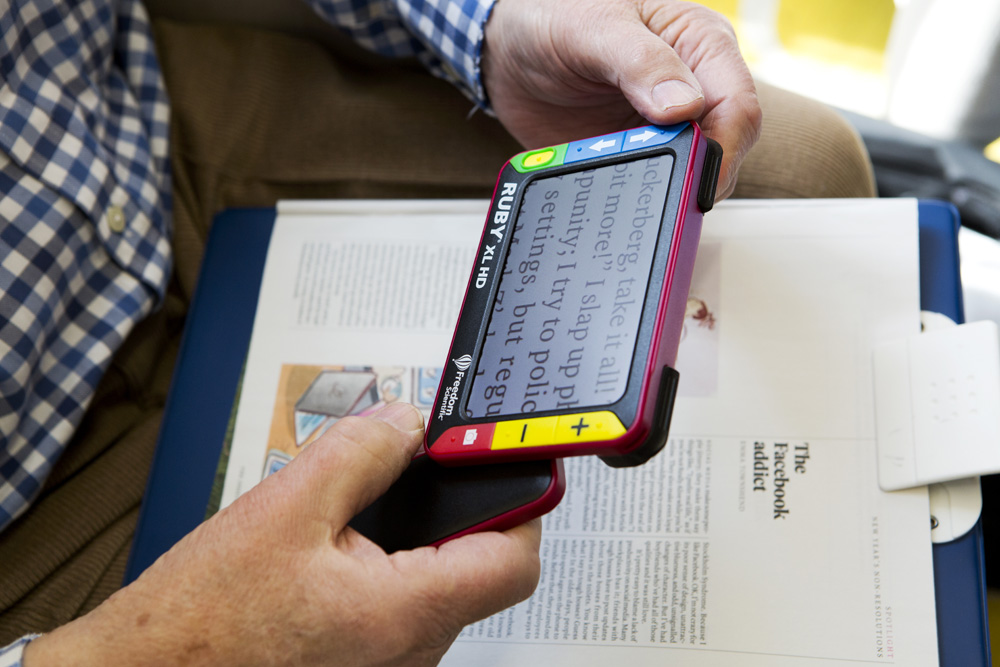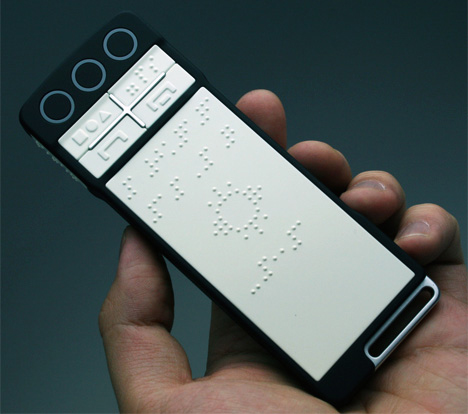Voice-Activated Assistive Devices: Simplifying Everyday Tasks
Wiki Article
Discover Innovative Devices Made for the Aesthetically Damaged
The advancement of ingenious tools for the visually damaged stands for a substantial improvement in access and freedom. Technologies such as wise glasses with AI capacities and mobile applications developed to offer auditory summaries are reshaping day-to-day experiences for individuals.Smart Glasses for Navigating

Smart glasses created for navigating are changing the way visually impaired people connect with their setting. These innovative gadgets utilize a mix of electronic camera technology, expert system, and auditory responses to provide real-time info regarding surroundings. By utilizing barrier discovery systems, smart glasses can notify individuals to potential risks, enabling more secure movement in both acquainted and strange settings.
The combination of GPS technology even more boosts navigating capabilities, enabling users to obtain auditory instructions as they relocate. This hands-free method not only promotes self-reliance however likewise empowers aesthetically impaired people to navigate city landscapes with increased self-confidence. In addition, numerous wise glasses are furnished with attributes that determine landmarks and road indications, supplying contextual info that enhances the user experience.
Additionally, the development of these devices is constantly advancing, with firms working to boost the accuracy of things recognition and expand the range of navigational features. As clever glasses end up being extra inexpensive and obtainable, they hold the prospective to substantially change life for visually impaired individuals. Eventually, these ingenious tools represent an important step towards inclusivity, offering boosted wheelchair and a higher feeling of freedom for individuals browsing the globe around them.

Mobile Apps for Daily Living
Exactly how can mobile applications enhance the day-to-days live of aesthetically damaged people? Mobile applications are transforming the method aesthetically damaged individuals navigate their atmospheres, manage everyday jobs, and accessibility information. These applications supply vital support through various functionalities, cultivating self-reliance and boosting high quality of life.A number of ingenious mobile apps are developed specifically for day-to-day living. Applications like Be My Eyes connect aesthetically impaired customers with sighted volunteers via video clip phone calls, allowing them to get real-time help with jobs such as checking out tags or navigating unknown areas. Similarly, Seeing AI, established by Microsoft, utilizes artificial intelligence to explain environments, reviewed text, and recognize objects, properly changing a mobile phone into a powerful device for everyday aid.
In addition, navigating applications tailored for the aesthetically damaged, such as Aira and BlindSquare, use audio-based directions and ecological info, enabling individuals to traverse their surroundings safely and confidently. Beyond navigating and prompt aid, mobile apps likewise support organization and task management, with features that aid users set suggestions, produce order of business, and track appointments. In summary, mobile applications serve as important sources, empowering aesthetically impaired people to lead more independent and fulfilling lives.
Wearable Technologies for Aid
Empowerment through modern technology is significantly noticeable in the realm of wearable tools developed to aid aesthetically damaged people. These cutting-edge tools incorporate effortlessly right into life, boosting navigating and giving important comments to individuals. For circumstances, clever glasses geared up with cameras can identify faces and check out text out loud, enabling customers to communicate more confidently in specialist and social settings.An additional noteworthy innovation is making use of haptic feedback systems in wearable gadgets. These systems utilize resonances or various other tactile signals to share information regarding the individual's setting, such as obstacles or modifications in surface, improving movement and safety and security. Wearable technologies also consist of wristbands that connect to mobile phones, alerting customers to alerts with subtle resonances, therefore boosting connectivity without reliance on visual signs.
As these modern technologies continue to advance, they are not only improving independence for visually damaged people but additionally cultivating a better sense of inclusion in culture. By bridging the void in between obstacles faced in day-to-day living and the potential for autonomy, wearable innovations function as crucial tools in the mission for equal rights and empowerment for those with aesthetic problems.
Sound Description Tools
Sound description devices play a vital role in boosting availability for aesthetically damaged people, providing them with the capability to engage with visual media. Screen readers for the blind. These devices use narrated descriptions of vital visual components in movies, tv shows, and live performances, guaranteeing that users can totally understand the context and emotions communicated via visualsSound description can be incorporated right into different platforms, including streaming solutions, movie theater screenings, and live cinema. Lots of popular streaming services currently consist of audio description as an availability attribute, permitting customers to pick it conveniently. In addition to traditional media, specialized applications additionally exist, giving audio summaries for art events, galleries, and other social events.
The effectiveness of audio description pivots on the ability of the storytellers, who have to convey visual information succinctly without diminishing the original sound. Developments in this area are likewise leading the way for more personalized experiences, where users can adjust the degree of detail and pacing according to their choices.
Braille Innovations and Gadgets
Braille tools and technologies have actually dramatically changed the means visually damaged people interact with text and details. Modern advancements have actually led to the advancement of versatile devices that improve literacy and freedom amongst users. Significantly, Braille show innovations have progressed, enabling dynamic view publisher site analysis experiences. useful link These devices transform electronic message into Braille, enabling individuals to access a vast array of information on computers, mobile phones, and tablet computers.
Additionally, mobile Braille notetakers incorporate conventional Braille input with contemporary performances, assisting in note-taking, organizing, and record modifying on the move. Braille displays and notetakers. These portable devices often feature text-to-speech abilities, bridging the void between Braille and auditory information
Additionally, cutting-edge Braille printers have actually emerged, permitting individuals to generate Braille tags, papers, and educational products effectively. This availability promotes higher participation in educational and professional settings, eventually advertising inclusivity.
Additionally, study into smart Braille modern technologies remains to expand. Gadgets that include expert system are being discovered to give real-time navigating assistance and contextual info, improving the user experience in diverse setups. Overall, these advancements show a dedication to equipping visually damaged individuals with technology, ensuring they can easily gain access to and engage with the world around them.

Final Thought
The improvement of cutting-edge tools for the aesthetically impaired dramatically enhances self-reliance and high quality of life. These modern technologies not a knockout post only foster better inclusion yet additionally promote autonomy in everyday tasks, ultimately contributing to an extra equitable and accessible culture for visually impaired people.As smart glasses become more inexpensive and obtainable, they hold the prospective to substantially change day-to-day life for aesthetically damaged customers. Mobile apps are transforming the way visually impaired customers browse their atmospheres, take care of day-to-day jobs, and access information. Apps like Be My Eyes connect visually impaired customers with sighted volunteers by means of video clip phone calls, allowing them to get real-time support with jobs such as reviewing labels or browsing unfamiliar rooms.Additionally, navigation applications customized for the aesthetically damaged, such as Aira and BlindSquare, supply audio-based directions and ecological information, making it possible for individuals to traverse their environments securely and confidently.The advancement of innovative tools for the aesthetically damaged substantially enhances self-reliance and quality of life.
Report this wiki page